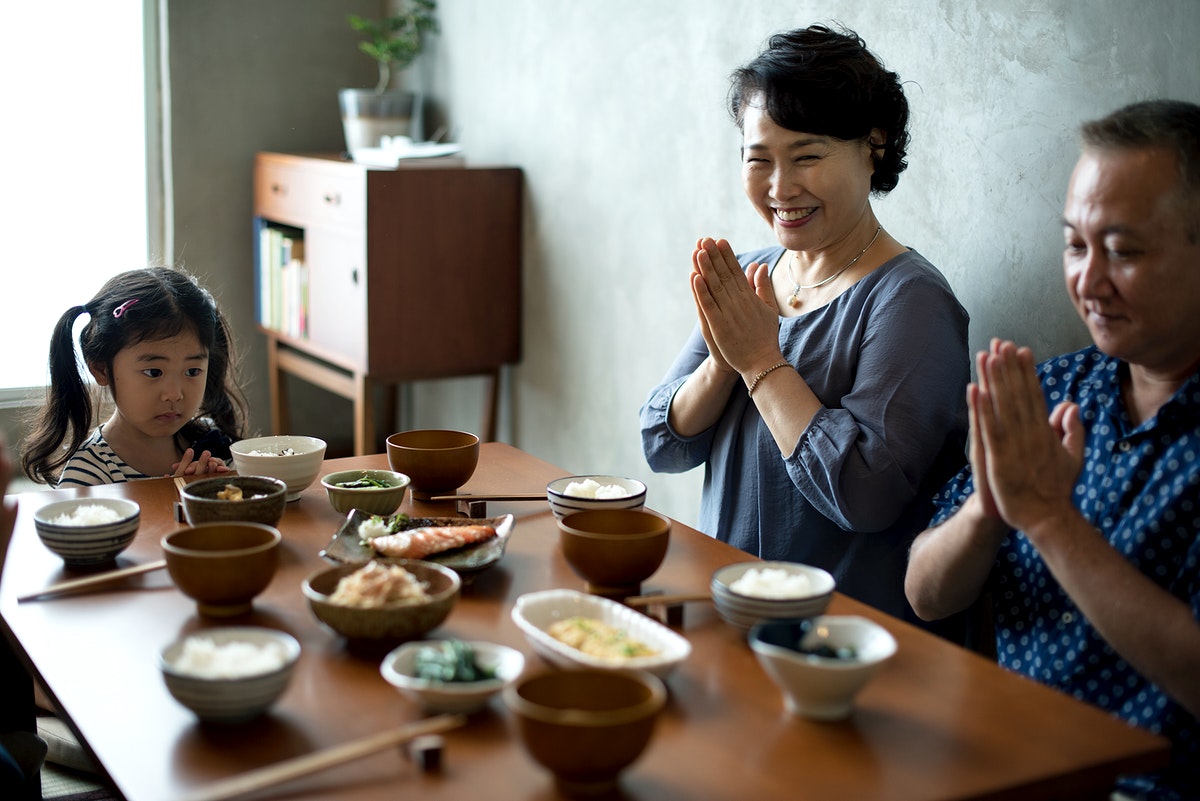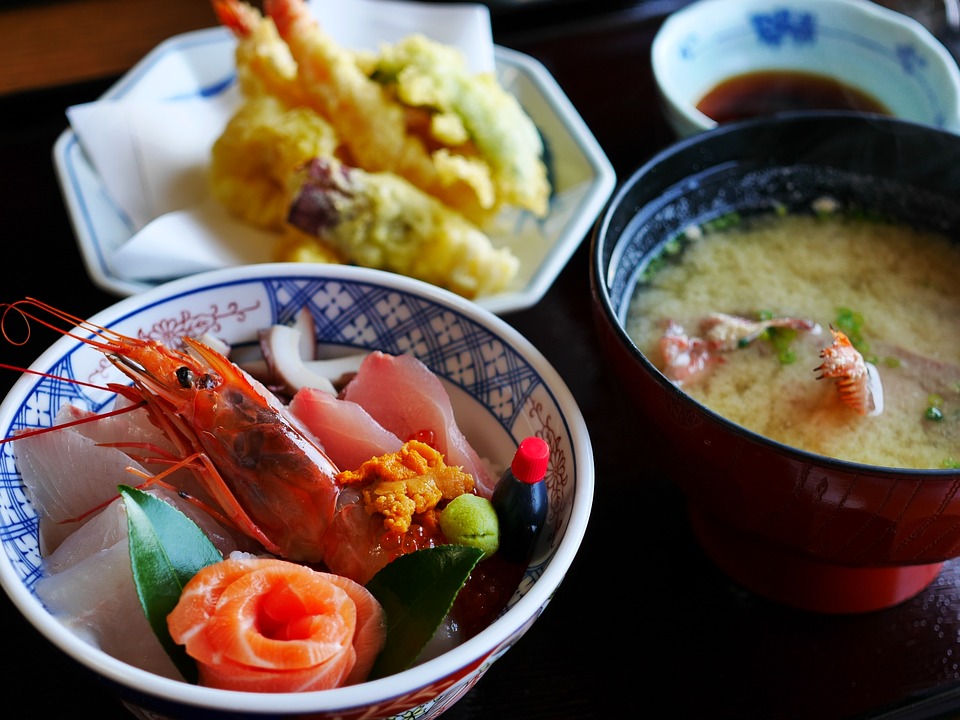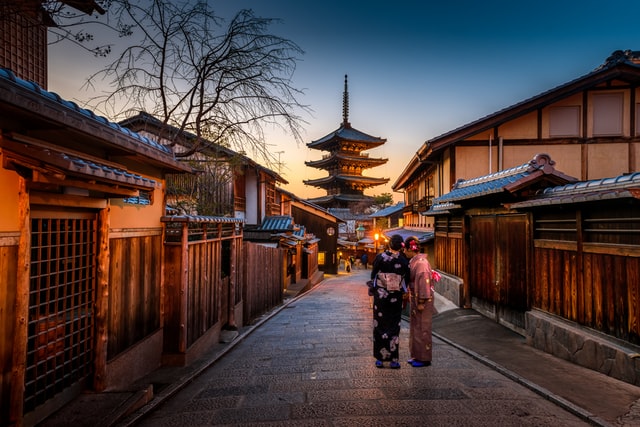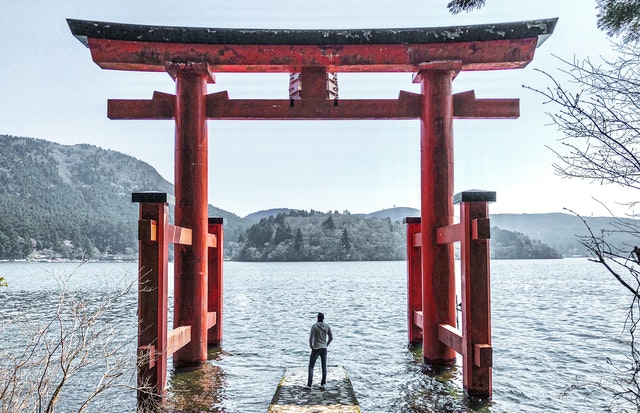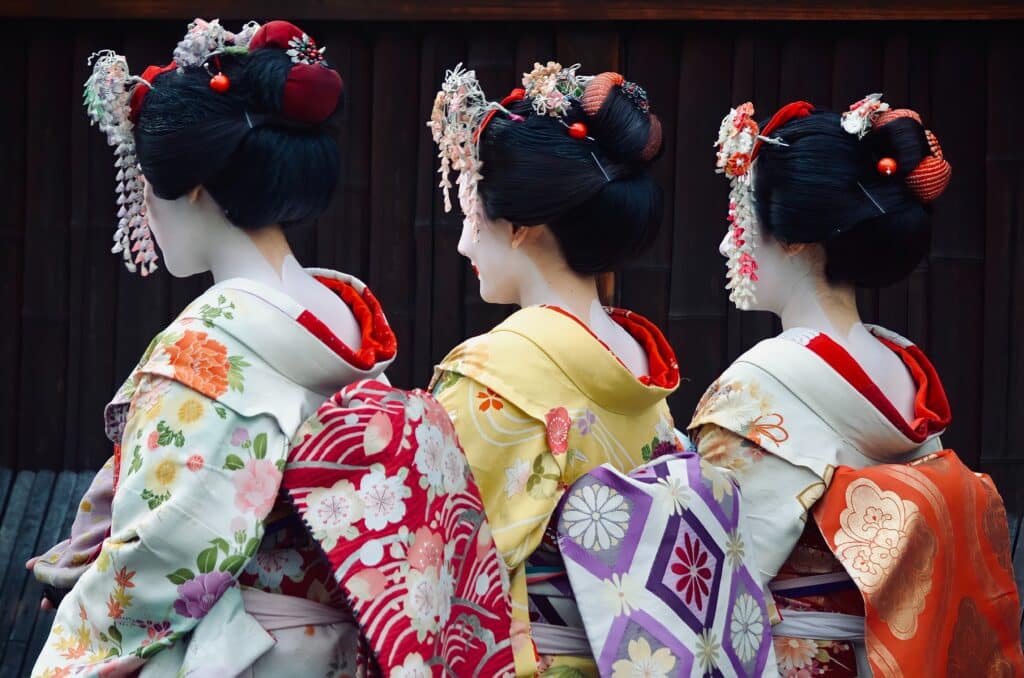
The Ultimate Guide to Japanese Culture
Japan has a rich culture that spans thousands of years, with prehistory dating back as far as 14,500 BC.
In this post, we’ll explore everything you need to know about Japanese culture—the Japanese language, food, anime, religion and spirituality, you name it.
Contents
- Japanese Customs and Traditions
- Japanese Arts and Entertainment
- Food and Drink Culture in Japan
- Japanese Sports Culture
- History and Influences of Japanese Culture
- Japanese Religion and Spirituality
- Work and Business Culture in Japan
- The Japanese Language
- And One More Thing...
Download: This blog post is available as a convenient and portable PDF that you can take anywhere. Click here to get a copy. (Download)
Japanese Customs and Traditions
Japan is generally a conservative society with many unique customs. Some dating back thousands of years. Traditions are highly regarded as pillars of what makes the Japanese people unique.
Here are a few aspects of the modern-day Japan customs:
- Clothing tends to be modest, muted in color and concealing compared to Western clothes. Japanese people still wear traditional clothing at festivals and during important ceremonies though.
- Tattoos are traditionally associated with yakuza—the Japanese mafia. They boast detailed full-body works of art that affiliate them with their clan. This means that your ink might raise a few eyebrows. However, younger people tend to be more accepting of tattoos.
- Dating doesn’t begin until someone confesses. This mutual acknowledgment of each other’s feelings provides the springboard to begin a relationship. Japanese usually show less affection and instead show subtle signs that they care. Also, kissing your significant other in public is a big no-no.
- Mascots do more than look cute. Japan’s mascots have gained a reputation for being cute and cuddly representations of companies, products, cities and more. But they also serve a cultural purpose. These beloved characters promote tourism and increase awareness of important issues.
Keep reading:
42 Romantic Japanese Phrases to Get Your Love Game On | FluentU Japanese Blog
Dating in Japanese? No problem. Click here to learn 42 romantic Japanese phrases. Learn how to use pick-up lines, ask someone out, confess to your crush, break up with…
10 Famous Japanese Mascots | FluentU Japanese Blog
Japanese mascots (or yuru-kyara) are an international phenomenon. They’re everywhere you look in Japan and have become an integral part of the culture. Check out 10 of the…
Japanese Arts and Entertainment
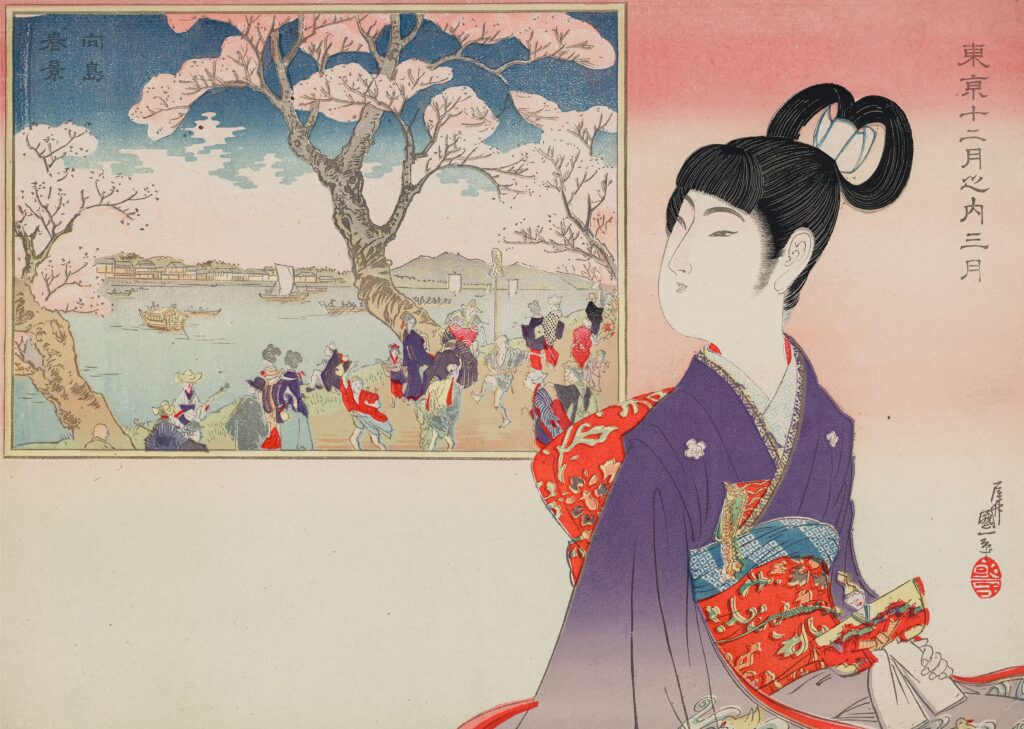
Japanese art has beautiful aesthetics of elegance and simplicity. Some arts have been carefully crafted over centuries, while others were developed more recently.
Japanese Anime
It’s impossible to talk about Japanese art without mentioning anime.
Anime has taken the world by storm and is one of the largest gateways to Japan’s artistic culture. Many classics such as “Astro Boy,” “Dragon Ball” and “Naruto” have become household names.
Anime has its roots in the Edo period, when shows called utsushi-e that involved glass slides cast through a wooden lantern became popular.
Today, Japan boasts over 400 animation companies that have created hundreds of shows and movies.
Keep reading:
Learn Japanese with Anime: 37 Anime Series and Movies for Every Level | FluentU Japanese Blog
Are you looking to learn Japanese with anime? In this post, we share 37 of the best anime series and movies to brush up your language skills no matter what level your…
Japanese Authors
“The Tale of Genji” is one of the world’s oldest novels, written by Japanese author Murasaki Shikibu.
Japan has a rich literary tradition that continues today thanks to the contributions of Japanese authors from across the centuries. Many have works renowned worldwide, including Kenzaburo Oe and Haruki Murakami.
Short stories also have a massive place in Japanese literature, with collections of stories compiled in books and monthly magazines.
Keep reading:
12 Famous Japanese Authors You Shouldn’t Miss Out On | FluentU Japanese Learner Blog
As far as famous Japanese authors are concerned, you may only be familiar with Haruki Murakami and Banana Yoshimoto. But what about Junichiro Tanizaki, Kobo Abe, Mitsuyo…
Japanese Short Stories: 17 Captivating Stories and Collections To Read in 2024 | FluentU Japanese Blog
Japanese short stories have become famous in both the literary and language learning worlds. If you’re looking for some concise beauty, lovely grammar usage and playful…
Japanese Entertainment
Ever heard of Akira Kurosawa? Utada Hikaru? How about Takuya Kimura?
These are just a few of Japan’s media icons.
Of course, who can forget “Godzilla” or “The Ring”? Both of these films are Japanese, and many Japanese movies have captured global audiences.
Their rich stories reflect the history and themes popular in Japan, making them a great way to get familiar with the culture.
Japanese singers have also created music that charms the hearts of the populace and niche communities.
Keep reading:
11 Most Famous Japanese Singers and Groups for 2024 | FluentU Japanese Blog
Japanese music is a huge part of Japanese culture. So rock your Japanese studies with these 11 most famous singers and groups! We include classics like Utada Hikaru and…
The 30 Best Japanese Movies of All Time, Ranked According to IMDb [Updated for 2024] | FluentU Japanese Blog
These incredible Japanese movies are must-see masterpieces whether you’re a cinephile, Japanophile or both. Many of them are the important, influential movies you’d find…
Japanese Theater
Kabuki theater—perhaps the most widely known—involves thrilling, stylistic performances by actors in vibrant masks.
In contrast, Noh theater involves refined movements and carefully crafted poetic stories with roots in performances at religious ceremonies.
There are also the masterfully manipulated puppets in Bunraku, which continue to entertain thousands in the 21st century just as they did in 16th century Edo.
Japanese Traditional Arts
One of the most prolific of Japan’s traditional arts is the tea ceremony, an elaborate tradition of preparing matcha and serving it with delicious sweets. It’s the ultimate show of hospitality.
This highly formal ceremony involves using bamboo tools to serve and whisk the tea in a series of steps so guests can enjoy a cup of thick green tea.
Other arts include calligraphy, which turns writing Japanese kanji into a flowing, graceful piece of art. There’s also ikebana, which involves arranging flowers into a specific aesthetic style.
Schools and universities typically have clubs dedicated to practicing these arts, and community centers offer classes and events where anybody can experience them—tourists included.
Japanese Manga
Manga is one of Japan’s most popular inventions and is now famous worldwide. It consists of comics and graphic novels.
Manga covers various genres, from action and adventure to romance and comedy. It also often features distinctive visual styles and storytelling techniques.
You can find countless manga series in weekly or monthly magazines in Japan and online. They’re often later compiled into tankobon volumes—which are basically comic book collections. Many animes are also based on manga series.
Some popular mangas include Naruto, One Piece, Attack on Titan and Death Note.
Keep reading:
5 Exciting Japanese Manga Comic Books You’ve Got to Know | FluentU Japanese Blog
Japanese comic books or manga feature some impressively cool artwork and storytelling. Try reading these 5 exciting manga series today and find out where to buy both the…
Learn Japanese with Manga in 6 Simple Steps | FluentU Japanese Blog
If you want to learn Japanese with manga, click here. This guide gives six simple steps to learn Japanese with manga effectively, unique learning tips, explores our top…
Food and Drink Culture in Japan
Traditional Japanese food is known as washoku (和食, わしょく, Japanese food). It’s known for its simple, clean flavors, which vary from region to region.
Food is taken very seriously, and the ideal meal is created while considering the balance of colors, flavors and nutrients.
Fish and seafood are the staple protein of Japanese meals, although Japan has many delicious meat dishes (yakitori, anyone?). Miso soup and pickled vegetables are found on every washoku menu. And delicious, fluffy white rice!
Dozens of varieties of tea are cultivated in Japan, with bottles of warm and cold tea available in vending machines nationwide. Green tea, oolong tea, black tea… going into every single kind would take ages.
Alcohol holds a special place in Japanese culture. From traditional sake to chuu-hai and beer, Japanese people are big drinkers. Many bonding sessions between colleagues are held over glasses of beer at an izakaya.
When drinking, filling your friends’ glasses before your own is a must—preferably before they get empty.
Keep reading:
How to Order Food in Japanese: The Complete Guide with 31 Key Phrases | FluentU Japanese Blog
Knowing how to order food in Japanese might be critical to your survival in Japan, but it’s also part of becoming fluent. Click here for the ultimate guide on how to order…
150 Japanese Food Vocabulary [with Pronunciation and Translation] | FluentU Japanese Blog
This Japanese food vocabulary is guaranteed to make you hungry, instantly. Don’t read about this delicious vocabulary on an empty stomach! You’ve been warned.
Japanese Sports Culture
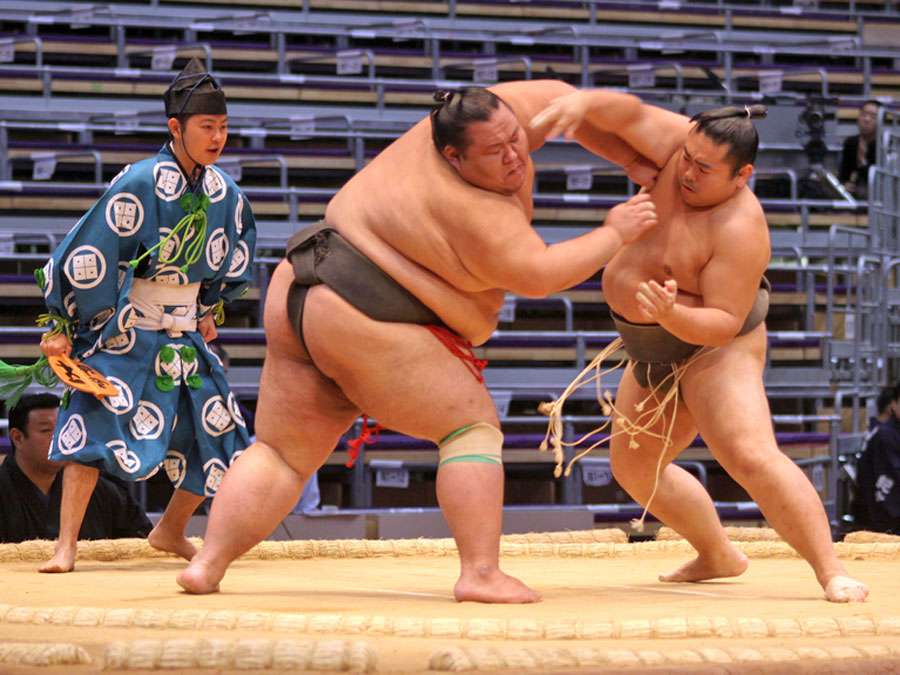
From martial arts to modern sports, Japan loves athletics.
They even have a dedicated holiday called “Health and Sports Day” where schools and communities unite for huge athletic events.
Baseball is Japan’s most popular sport, with the Japan Series and High School Baseball Championships drawing thousands to the stands every year.
Some Japanese players have also reached celebrity status outside of Japan—Ichiro Suzuki of the Seattle Mariners is undoubtedly one of the most famous ballplayers ever.
Tennis, soccer and golf are also enjoyed throughout the country, both recreationally and competitively.
However, traditional Japanese sport remains popular. Sumo is the unofficial national sport of Japan, which originated as a Shinto ritual and evolved into a thrilling wrestling match where two giant men attempt to throw each other out of the ring.
Japanese Martial Arts
Japanese martial arts are a window into the cultural heritage of Japan.
Judo—a martial art focused on technical takedowns of one’s opponent—has achieved global popularity and an Olympic category.
Kendo swordsmanship has roots in samurai techniques, as duelers let out spirited shouts in a flurry of bamboo blades.
There’s also Japanese archery—kyudo—which uses large, powerful bows and has a subsection devoted to shooting on horseback.
And of course, there’s aikido and jujitsu.
History and Influences of Japanese Culture
Ancient Japan had Chinese and Korean influences. Many technologies, such as rice farming and ironwork, came from China and Korea. Buddhism started in Japan through the Korean peninsula, while Japanese kanji comes from Chinese characters.
Even tea was imported from China, first brought to Japan by Buddhist monks returning from their studies in the 8th century.
Confucianism and its teachings diffused throughout Japan, developing Japan’s group-oriented culture. This Confucian principle holds that the group’s harmony is primarily placed above the individual’s feelings.
As such, Japanese people view themselves as a collective group, taking great care to act in the best interests of those around them to preserve integrity.
Being able to read the atmosphere, kūki o yomu (空気を読む, くうきをよむ), is necessary for all situations so that everyone’s feelings are taken into account before an individual makes a decision.
But that’s not to say Japan has no home-grown traditions.
Japanese customs revolve around the four seasons. Japan places a lot of emphasis on its four distinct seasons: warm pleasant springs, hot humid summers, crisp blustery autumns and cool frosty winters.
Japanese people look forward to hanami (花見 , はなみ, cherry blossom viewing) in the springtime and wearing yukata, a more casual version of the kimono, at summer festivals.
Different foods are served depending on the time of year as well.
Another Japan-native custom is the immense influence of Tokyo on everything. Beginning in feudal times, when the families of the nobility and military officials were required to live in Tokyo, a typical “Tokyo culture” became pervasive and seen as the standard for all of Japan.
A quarter of Japan’s population lives in the Tokyo Metropolitan Area. And Tokyo is the political, financial and cultural hub for the entire country.
It also gets attacked by giant monsters in movies—much like New York or Los Angeles in the United States!
Keep reading:
The 4 Seasons in Japanese and 20+ Related Words to Spring into Fluency | FluentU Japanese Blog
Learn how to say the four seasons in Japanese, and over 20 related vocabulary words and phrases. In addition to the seasons, discover some seasonal facts about Japanese…
Japanese Religion and Spirituality
Japan has two major religions: Shinto and Buddhism.
These religions coexist peacefully in Japanese society, with traditions from both found in everyday life.
Shinto shrines can be found at Buddhist temples, and Japanese people commonly have a Shinto wedding and a Buddhist funeral.
Shintoism
Shinto is the religion indigenous to Japan. It believes that the kami (神, かみ) inhabits all things, from animals to mountains.
Kami may be translated as “god” or “spirit,” but those words don’t quite cover the essence of what kami are.
They are natural forces that inspire a sense of awe and reverence, which can manifest in places, things or even people.
Shrines are built to house and worship kami, and it is here where rituals of worship and offerings are made to these deities. Priests and miko (巫女, みこ, shrine maidens) are the ones who traditionally carry out these rituals and care for the shrines.
Shinto is more of a set of customs and traditions rather than an organized religion with strict doctrines and holy texts.
Buddhism
Buddhism was imported to Japan via the Korean kingdom of Baekje.
It encompasses a variety of spiritual paths that seek to release an individual from earthly suffering and the cycle of rebirth by attaining enlightenment.
Initially, Buddhism was embraced by the ruling class of Japan before eventually gaining acceptance among the common people. Buddhism and its teachings spread across the country, with grand temples being built and monks traveling to China to study.
Over time, Buddhism evolved into several Japanese sects, including Nichiren, Pure Land and Zen Buddhism.
These sects have different specific practices, but they all revolve around keeping a pure heart and mind as one diligently performs rituals and introspective meditation.
Other Religions
Other religions—such as Christianity and Islam—are uncommon in Japan. However, Japan does celebrate Christmas as a romantic holiday.
Despite all of these practices, Japan is not especially religious in a traditional sense. Religious rituals are more observed as a cultural habit than devout practice among everyday people.
Visiting shrines and temples is common to pray for good luck or fortune, and many festivals are held at Shinto shrines.
On New Year’s Day, people flock to the shrines for the first new year visit. And Buddhist temples ring a bell 108 times to drive out the misfortune of the previous year.
Keep reading:
“Merry Christmas” in Japanese and 62 Other Holiday Phrases | FluentU Japanese Blog
“Merry Christmas” in Japanese is メリークリスマス (merii kurisumasu). Learn more ways to say “merry Christmas” with this guide, which covers Japanese holiday…
Superstition and Japan
Japan is often more superstitious than religious.
Many of these superstitions have roots in old folklore and involve word associations, as Japanese has many homophones (words pronounced the same with different meanings).
For instance, unlucky years—known as yakudoshi (厄年, やくどし)—are ages of your life when it’s believed you’re more prone to bad luck.
Speaking of ill-omen numbers, 4 and 9 represent death and suffering. So they tend to be avoided in room numbers and gift-giving.
Fortune telling is also popular, and visiting a shrine to receive a fortune or make a wish to the gods is a common activity.
Keep reading:
10 Spooky Japanese Superstitions That Will Totally Freak You Out | FluentU Japanese Blog
Japanese superstitions are a big part of Japanese culture, so you definitely don’t want to miss them. Check out these 10 spooky superstitions from Japan, ranging from…
Japanese Fortune Telling: 5 Ways to Seek Good Luck in Japan | FluentU Japanese Blog
Japanese fortune telling is a unique aspect of the culture. In this post, you’ll learn about the sacred lot of omikuji, the beckoning cat, daruma dolls, wooden prayer emas…
Manners and Etiquette in Japan
With gestures and actions, Japanese people nurture their relationships with one another and maintain harmony in the group.
Some basics to keep in mind are:
- Take off your shoes when entering someone’s house.
- Silence your phone on the train or bus.
- Never stick your chopsticks upright in a bowl of rice. This is only done at funerals. Don’t play with them, either!
- Carry your garbage until you find the proper bin to dispose of it.
- Make sure you stand on the proper side of the escalator.
Keep reading:
14+ Essential Japanese Gestures, Plus Body Language to Avoid | FluentU Japanese Blog
Japanese gestures can differ drastically from those used in the West, so brushing up could be a good idea! Here are 14+ gestures you’ll need in Japan, plus body language…
Japanese Formality
Japanese society is very formal and hierarchical.
When Japanese people interact, they consider their age, occupation, social standing and degree of familiarity as they choose their words and actions.
But don’t—you’re not expected to master all the formalities.
Here are a few facts to help you navigate polite Japanese society:
- Formal Japanese is different from informal language. Different politeness levels of speech range from extremely casual to polite speech called keigo. These levels help you show the proper amount of respect to the other person.
- The polite way of sitting is known as seiza. On formal occasions—such as a fancy dinner, when the guests are required to sit on the floor—it’s good manners to sit with your legs tucked underneath you and your hands on your thighs (for men) or folded in your lap (for women).
- How you bow matters. While it’s common knowledge that bowing in Japan shows respect, there are different degrees of bows depending on the situation. The most casual bow is eshaku (会釈, えしゃく) at 15°. Keirei (敬礼, けいれい) is for bosses and in-laws, and is performed at 30-45°. The deeper the bow, the more respectful it is. Visiting temples or apologizing for something significant requires a deep, long bow of 70°.
Keep reading:
Japanese Keigo: Everything You Need to Know to Be Polite | FluentU Japanese Blog
Japanese keigo is the cherished system of being polite. As you may know, Japanese people love being polite. They like it so much they have multiple special grammar…
Japanese Formality: How to Use Formal and Informal Japanese | FluentU Japanese
Should you use formal or informal Japanese? How should you behave in a Japanese business meeting? What’s the right way to greet a Japanese friend? Stop fretting and learn…
Work and Business Culture in Japan
It’s hard to find a more rigid and formal world than the Japanese business one. There are rules for where the supervisor sits in a room, how to greet superiors and customers, showing due deference and more.
If you hope to do business with Japanese companies, it’s worth taking note of the differences in work culture between your country and Japan.
Keep reading:
https://www.fluentu.com/blog/japanese/business-japanese-vocabulary/
Business Cards
Exchanging business cards (名刺交換, めいしこうかん) is a standard custom in Japan and is crucial if you hope to make any headway with your new Japanese contacts.
Business cards are seen as the face of the individual they belong to and must be handled with the utmost respect.
Workplace Hierarchy
There are strict hierarchies in the Japanese workplace. Seniority is king, with those who have been at companies longer earning higher wages and being offered better promotions.
Because of the value placed on hierarchy, Japanese employees are required to check with their supervisor on any issues.
Rather than the go-getter individual valued in the West, a person who diligently checks with their boss before making any decision is seen as a good employee in Japan.
Socialization After Work
Japanese businessmen know how to unwind. Socializing at bars or karaoke places after work with your coworkers—in a practice called nomikai (飲み会 , のみかい)—is common to build relationships among the team.
The strict social regulations of the workplace ease up in these situations, which allows coworkers to complain to each other about the stresses of the job.
Sometimes a few members of the group will go out for a second party called nijikai (二次会 , にじかい), literally meaning “second party.” Things can really get wild there!
The Japanese Language
Japanese is spoken by 125 million people worldwide.
It’s also one of the most difficult to master, with three writing systems, grammar structures much different from English and an entire subsection of hierarchical language.
Japanese is considered a language isolate, meaning it has no relationship to any other language.
This makes Japanese unique in its structure, with no other language quite like it.
Keep reading:
Is Japanese Hard to Learn? Not Really, and Here Are 11 Reasons Why | FluentU Japanese Blog
Contrary to popular belief, Japanese is actually easy to learn. For starters, its verb conjugations are much simpler than that of many other languages and word order is…
Japanese Pronunciation
Japanese has 15 consonants and only five vowels, so pronouncing Japanese is pretty easy once you get the hang of the accent.
The consonants and vowels are combined to form syllables, which is what hiragana and katakana are used to convey.
The best part? Every syllable is pronounced the same, no matter where it is in a sentence.
Japanese Writing
Hiragana and katakana are the two indigenous systems used to write Japanese.
They’re classified as syllabaries, meaning one character translates to one syllable (consonant + vowel).
Kanji, on the other hand, was borrowed from China.
Kanji is a pictographic system, with one character translating to one word. Fun fact: hiragana and katakana were derived from kanji!
Keep reading:
https://www.fluentu.com/blog/japanese/how-to-learn-to-read-write-japanese-hiragana-katakana-fast/
How to Learn Kanji: 18 Tips from a Guy Who Did It and Survived | FluentU Japanese Blog
“How to learn kanji without getting a headache” is a thought you probably have on a regular basis. Luckily, you can read this list of different approaches to learning…
Japanese Speech
Japanese has gendered speech, meaning it has different speech styles for men and women. The two main differences lie in personal pronouns and sentence-ending particles.
In Japanese, there are several different ways of saying “I.”
あたし is exclusively female, while 俺 (おれ) is exclusively male. 私 (わたし) can be used regardless of sex.
Some Japanese particles—little sounds that identify the role of words in a sentence—lean more towards a specific gender. わ, なの and かしら are preferred by women, while ぞ, ぜ and よ are used in rough, male speech.
Japan also has different dialects depending on the region of the country. How one person speaks in Fukuoka can sound odd to someone from Aomori.
This is why I recommend immersing yourself in as much Japanese as possible from day one.
An easy way to do this is using a language learning program like FluentU.
FluentU takes authentic videos—like music videos, movie trailers, news and inspiring talks—and turns them into personalized language learning lessons.
You can try FluentU for free for 2 weeks. Check out the website or download the iOS app or Android app.
P.S. Click here to take advantage of our current sale! (Expires at the end of this month.)

Keep reading:
The 17 Must-know Japanese Particles and How to Use Them | FluentU Japanese Blog
Japanese particles are important if you want to understand native speakers and form your own sentences. Read this blog post to learn the most essential 17 Japanese…
Gender in Japanese: How It Works and Six Common Uses | FluentU Japanese Blog
Gender in Japanese isn’t a simple as it is in some other languages. Though there is no official grammatical gender in the language, gender slips into much speech, from…
7 Major Japanese Dialects You Should Know to Seem More Local | FluentU Japanese Blog
There are seven Japanese dialects, besides Standard Japanese. Knowing each of the major seven dialects, or at least a little about them, will help you as you travel around…
With so much culture to explore, Japan is a very interesting culture for many.
And One More Thing...
If you love learning Japanese with authentic materials, then I should also tell you more about FluentU.
FluentU naturally and gradually eases you into learning Japanese language and culture. You'll learn real Japanese as it's spoken in real life.
FluentU has a broad range of contemporary videos as you'll see below:

FluentU makes these native Japanese videos approachable through interactive transcripts. Tap on any word to look it up instantly.

All definitions have multiple examples, and they're written for Japanese learners like you. Tap to add words you'd like to review to a vocab list.

And FluentU has a learn mode which turns every video into a language learning lesson. You can always swipe left or right to see more examples.

The best part? FluentU keeps track of your vocabulary, and gives you extra practice with difficult words. It'll even remind you when it’s time to review what you’ve learned. You'll have a 100% personalized experience.
Start using the FluentU website on your computer or tablet or, better yet, download the FluentU app from the iTunes or Google Play store. Click here to take advantage of our current sale! (Expires at the end of this month.)
